IRDAI Registration No. : 016 Valid Till : 15-05-2026 , CIN Number: U85199KA2002PTC030218
Is organic food really better for your mental and physical health? Do GMOs and pesticides cause cancer and other diseases? What do all the labels mean?
Organic: What it Mean?
The term “organic” refers to the way agricultural products are grown and processed. While the regulations vary from country to country, but in general, organic crops must be grown without the use of synthetic pesticides, bioengineered genes (GMOs), petroleum-based fertilizers, and sewage sludge-based fertilizers.
Organic livestock raised for meat, eggs, and dairy products must have access to the outdoors and be given organic feed. They may not be given antibiotics, growth hormones, or any animal by-products.
| Organic vs. Non-Organic | |
|---|---|
| Organic produce: | Conventionally-grown produce: |
| Grown with natural fertilizers (manure, compost). | Grown with synthetic or chemical fertilizers. |
| Weeds are controlled naturally (crop rotation, hand weeding, mulching, and tilling). | Weeds are controlled with chemical herbicides. |
| Pests are controlled using natural methods (birds, insects, traps) and naturally-derived pesticides. | Pests are controlled with synthetic pesticides. |
| Organic vs. Non-Organic | |
|---|---|
| Organic meat, dairy, eggs: | Conventionally-raised meat, dairy, eggs: |
| Livestock are given all organic, hormone- and GMO-free feed. | Livestock are given growth hormones for faster growth, as well as non-organic, GMO feed. |
| Disease is prevented with natural methods such as clean housing, rotational grazing, and healthy diet. | Antibiotics and medications are used to prevent livestock disease. |
| Livestock must have access to the outdoors. | Livestock may or may not have access to the outdoors. |
How your food is grown or raised can have a major impact on your mental and emotional health as well as the environment. Organic foods often have more beneficial nutrients, such as antioxidants, than their conventionally-grown counterparts and people with allergies to foods, chemicals, or preservatives often find their symptoms lessen or go away when they eat only organic foods.
Benefits of Organic Food
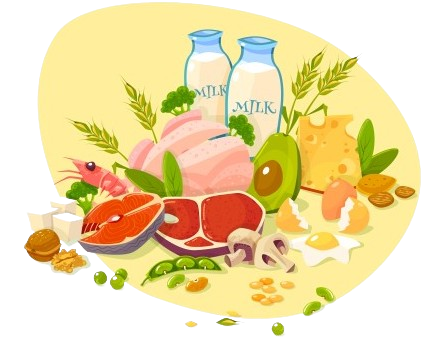
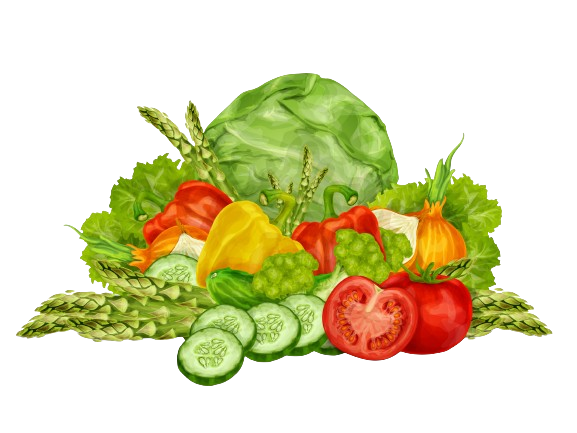
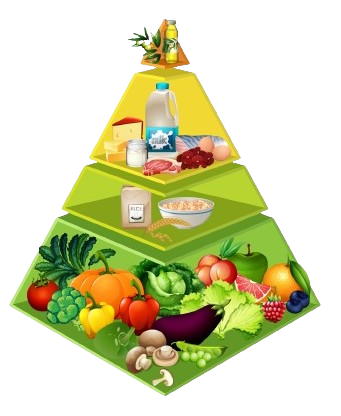
Tips for Buying Organic Stuff
Buy in season – Fruits and vegetables are cheapest and freshest when they are in season. Find out when produce is delivered to your market so you're buying the freshest food possible.
Shop around – Compare the price of organic items at the grocery store, the farmers‟ market and other venues (even the freezer aisle).
Remember that organic doesn’t always equal healthy – Making junk food sound healthy is a common marketing ploy in the food industry but organic baked goods, desserts, and snacks are usually still very high in sugar, salt, fat, or calories. It pays to read food labels carefully.
Why is organic food often more expensive?
Organic food is more labor intensive since the farmers do not use pesticides, chemical fertilizers, or drugs. Organic certification is expensive and organic feed for animals can cost twice as much. Organic farms tend to be smaller than conventional farms, which means fixed costs and overhead must be distributed across smaller produce volumes without government subsidies.
What to Do If You Can’t Buy Organic Produce?
If your budget doesn't allow for organic produce, or organic produce simply isn‟t available in your area, here are a few tips.
1. Washing Your Non-Organic Produce.
Recommendation is washing your produce with lemon juice and salt. You can also buy vegetable and fruit washes and soak your produce for a few minutes before rinsing it off.
2. Peeling Your Non-Organic Produce.
Another option is to peel the skin off non-organic produce. This is very common in few countries, where the use of pesticides is rampant. The downside is that much of the nutrition of a fruit comes from the skin.
3. Be Selective About Your Organic Food.
Organic produce can cost between 10 to 40% more, so picking and choosing between organic and conventional produce is a good way to save money. Below is the list of the Organic Dirty Dozen which has 12 items that you should always buy organic and the other 12 items are those that you can buy conventional with minimal effects. This list is based on the amount of pesticides and residues found on the fruit.
| 12 Most Contaminated Non-Organic Foods. | 12 least Contaminated Non-Organic Foods. |
|---|---|
| Peaches | Onions |
| Apples | Avocado |
| Sweet Bell Peppers | Sweet Corn (Frozen) |
| Celery | Pineapples |
| Nectarines | Mango |
| Strawberries | Asparagus |
| Cherries | Sweet Peas (Frozen) |
| Pears | Kiwi Fruit |
| Grapes (Imported) | Bananas |
| Spinach | Cabbage |
| Lettuce | Broccoli |
| Potatoes |
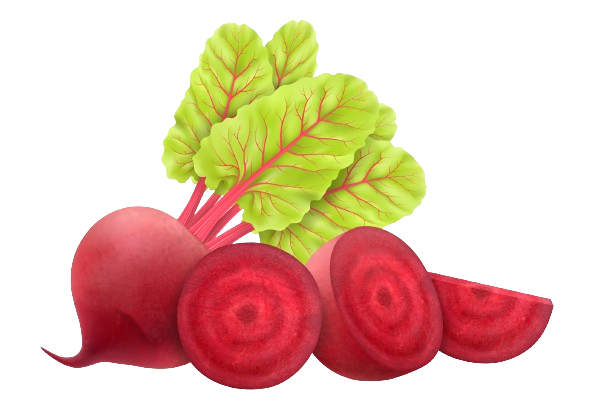
Beetroot is a dark red vegetable that has been linked with better stamina, improved blood flow and lower blood pressure. Its taste is described as sweet, earthy and tender to eat once cooked or pickled. The red colour of beetroot can be extracted and used as a natural food colourant. If you're considering beetroot as one of your 5-a-day, it contains potassium, magnesium, iron, vitamins A, B6 and C, folic acid, carbohydrates, protein, antioxidants and soluble fiber. Beetroot leaves are source of calcium, iron, beta-carotene, and vitamin C.
Beetroot for blood pressure management.
Beet root juice may help lower blood pressure due to its naturally occurring nitrate content.
Beetroot for the brain and dementia
Drinking beetroot juice increases blood flow to the brain. Maintaining good blood circulation to the brain is associated with a reduced risk of vascular dementia, one of the main causes of dementia.
Beetroot contains flavonoids called anthocyanins which are responsible for the deep pigments. Anthocyanins can help with recovery from the stress of exercise during training and competition as well as helping to counter the effects of pollution on the body.
Diabetes
Beets contain an antioxidant known as alpha-lipoic acid, which may help lower glucose levels, increase insulin sensitivity and prevent oxidative stress-induced changes in patients with diabetes.
Studies suggested a decrease in symptoms of peripheral neuropathy and autonomic neuropathy in people with diabetes due to the presence of alpha-lipoic acid have also shown
Digestion and regularity
Because of its high fiber content, beetroot helps to prevent constipation and promote regularity for a healthy digestive tract.
Inflammation
Choline is a very important and versatile nutrient in beetroot that helps with sleep, muscle movement, learning, and memory. It also helps to maintain the structure of cellular membranes, aids in the transmission of nerve impulses, assists in the absorption of fat and reduces chronic inflammation.
Exercise and athletic performance
Beetroot juice supplementation has been shown to improve muscle oxygenation during exercise, suggesting that increased dietary nitrate intake has the potential to enhance exercise tolerance during long-term endurance exercise. Quality of life for those with cardiovascular, respiratory, or metabolic diseases, who find the activities of daily living physically difficult because of lack of oxygenation, could be improved.
Beetroot side effects
The power of raw
The nutrients in beetroots are heat sensitive. With the rise in cooking time and temperature, the antioxidant content decreases. Beetroot is rich in Vitamin C which is a water soluble vitamin that can be destroyed on cooking. Not only this, it also loses more than 25 percent of its folate when cooked. It is best to mildly steam or bake it at lower temperatures. Fresh beets are as happy in a soup as they are when pureed in a dip. Grilling it may draw out the sweetness and give it a smoky flavor.
In the world of nutrition, sometimes carbohydrates get a bad rap. The negativity may be due to misinformation because so many foods contain carbs, and some are healthier than others. So let's separate fact from fiction and see how you can include carbs in your diet beneficially.
Choose these: Vegetables, fruit, beans, lentils and 100% whole grains are nutritious foods. Research links this combination of high-carb foods to prevention of heart disease, stroke and some types of cancer. These foods contain complex carbs and fiber that satisfy your hunger and help stabilize cholesterol and blood sugar levels. And they are high in vitamins and minerals.
Have these less often: Sugars, syrups and foods made with these ingredients, such as cookies, candy and ice cream, are less nutritious forms of carbohydrates, lacking vitamins and minerals. The American Heart Association recommends limiting added sugars to no more than six teaspoons per day for women and nine teaspoons per day for men. Excess added sugar — more than 12 teaspoons per day — is linked with an increased risk of heart disease, stroke and type 2 diabetes.
What about low-carb diets? There isn't one right diet for everyone, and some people — including those with type 2 diabetes — may thrive when they reduce carb intake. Most people who cut carbs successfully usually scale back on added sugar. That's good as long as you eat a variety of nutritious, whole, plant-based foods that meet your nutrient needs. Ultimately, the best diet is one you can stick to long term.
Remember : It's mistake to disparage all carbohydrates just because some of them are sugary and not nutritions.
In a medium bowl, combine tomato, mango, avocado, cilantro, onion and 1/4% tsp salt. Squeeze on some lime juice. Toss gently and set aside. Preheat barbecue to medium-high. Brush trout with oil and sprinkle with remaining salt. Lay fish on oiled grill pan or directly on grill, skin-side down. Close lid and grill for about 8-9 minutes. Remove cooked fish by sliding large spatula between skin and flesh, leaving skin on the grill pan. Transfer trout to platter and serve topped with mango-avocado salsa and a squeeze of lime.
Serves 6. Per serving: 386 calories | 38g protein | 18g total fat | 3g saturated fal | 9g mono tat | 4g poly fat | 12g carbohydrate | 4g sugar | 4g fiber | 391mg sodium |
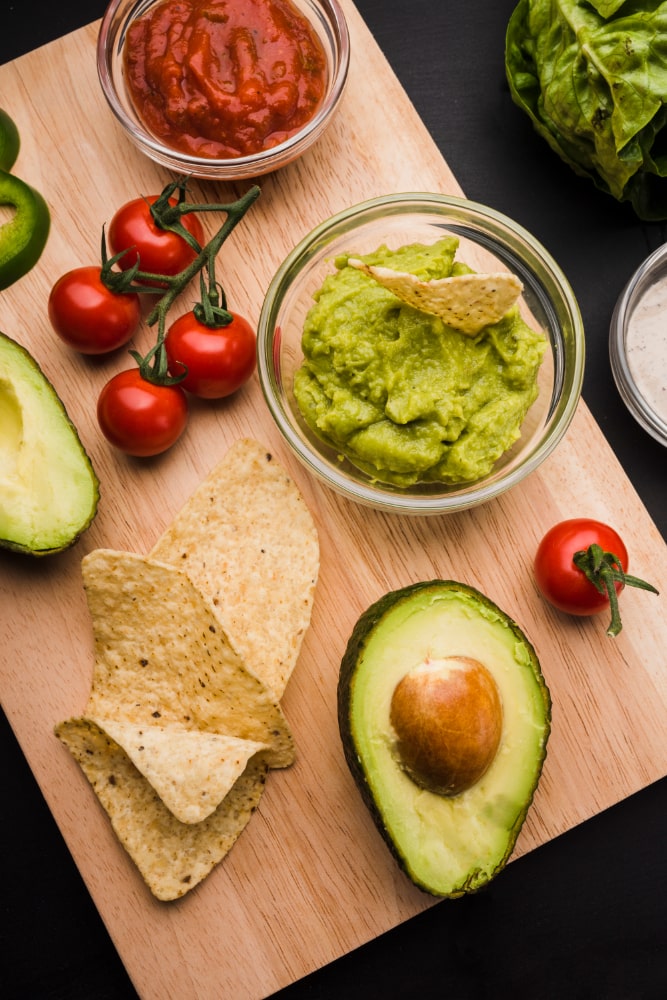
No tan is healthy : Hopefully, you use sunscreen to protect your skin. Nearly 5 million Americans are treated for skin cancer every year. When used correctly, sunscreen can help prevent skin cancer and protect your complexion.

In the U.S. only a small percentage of men and women use sunscreen regularly when outside for more than an hour. And many people who do use it aren't using it right.
Last year, the CDC reported that sunscreen users often get burned, likely because they apply too little sunscreen to protect against skin cancer — or apply or reapply it too late during sun exposure.
The best defense is to use a lot of sunscreen. Follow the CDC guidelines :
I Want to learn what your DNA says about your health? Be advised: Genetic test kits bought in stores or online are unreliable for making personal health decisions. Experts warn that interpreting genetic data is complex and these self-test kits provide little assurance that (a) you have a health risk potentially leading to a related health problem, or (b) you have a negative risk finding. But if your test shows you have a health risk, consult your health care provider.
I Love eggs? Looks like one a day is okay for your heart, based on data analysis from three large, long-term multinational studies published in the American Journal of Clinical Nutrition. Consuming about one egg a day does not appear to increase the risk of cardiovascular disease or mortality even in those with a history of heart disease or diabetes, nor does it impact blood cholesterol. Previous studies on egg consumption and diseases have been contradictory.
Weak in the knees due to arthritis? You can muscle up to help ease your pain and increase mobility. Strengthening muscles surrounding your knees is kev to protecting them. For example, focus on your quadriceps in the front of the thigh — the stronger your quads, the lighter the load transferred into your knee joint. Daily stretches can help keep those muscles flexible and limber. Losing excess weight helps, too. Ask your health care provider if physical therapy can help you.
Spending time in hot weather makes keeping your body hydrated extra important. Sweating and extra time in the sun, plus alcohol and caffeinated beverages, can cause dehydration and symptoms such as confusion, weakness and mood changes. The solution? Take regular breaks throughout the day to drink water, whether you feel thirsty or not. Snack on watermelon and other water-rich fruits.
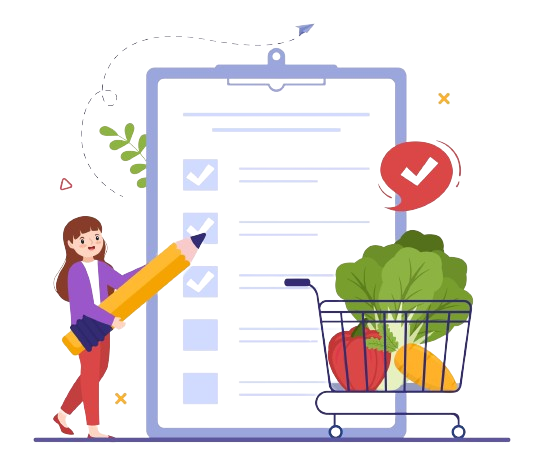
There is plenty of nutrition information out there, and sometimes its difficult to know which advice to follow. So, if you're looking for simple guidance, consider these your ABCDs of healthy eating.
Aways choose whole foods first. A whole food is one that sill close to how it was grown or raised, such as vegetables, fruit, beans, nuts, fish, meat, poultry, eggs, dairy and whole grains. Choose these more often than ulra-processed foods, such as candy, fries, chocolate, pastries and salty snacks.
Beverages count, too. The No. 1 source of sugar in the North American diet is sweet beverages such as soft drinks. Each 12-ounce can contains about 10 teaspoons of added sugar, and the World Health Organization recommends consuming no more than 12 teaspoons per day. Opt for water most often, or choose coffee and tea drinks without lots of cream and sugar. Learn to focus on how hungry you feel. Rate it on a scale of 1 to 10. Eat until you feel just full, but not stuffed. If you're not distracted, it's easier to monitor fullness cues.
Divide your plate. When you plan meals and snacks, fill half your plate with vegetables and fruit, a quarter with whole grains, and the remaining quarter with protein options, such as fish, poultry or legumes. This balanced plan provides the nutrients your body needs.
Summer Fruit Salad with Fresh Herbs
In a serving bowl, gently blend fruit with basil, mint, lime juice and zest. In a small bowl, blend Greek yogurt with honey. Divide fruit salad evenly onto 4 plates. Top each with a dollop of honey yogurt, and garnish with mint. Serve.
Serves 4. Per serving: 108 calories | 4g protein | 1g total fat 10.5g saturated fat 10.5g mono fat | Og poly fat 24g carbohydrate | 16g sugar | 4g fiber | 60mg sodium
Autumn is a great season for making soup. Try combinations such as squash + pear; pumpkin + apple; carrot + parsnip; or a hearty beet soup with a dollop of Greek yogurt. Try to make a big pot of soup once a week, and add a serving to any daily meal. It's a tasty way to boost your vegetable intake.
Autumn is the perfect time to bite into a fresh-picked pear or savor a new type of squash. Here are our top favorite crops to try this season:

Content is sourced from public domain & is provided by Vidal Health for educational & informational purposes. It should not be considered as a substitute to medical advice. Vidal Health makes every effort to ensure accuracy or completeness of editorial content, However we do not take responsibility for any errors, omission & also do not take responsibility to ensure that data, information of material is kept up to date. The views expressed in these articles are not necessarily those of Vidal Health. Reproduction, modification, storage in a retrieval system or retransmission, in any form or otherwise, for reason other than educational & for informational purposes are strictly prohibited without prior written permission of Vidal Health.
Corporate Office: Vidal Health Insurance TPA. Pvt. Ltd. First Floor Tower No. 2, SJR I - Park, EPIP Zone, Whitefield, Bangalore - 560066
Phone: +91080-48057205
